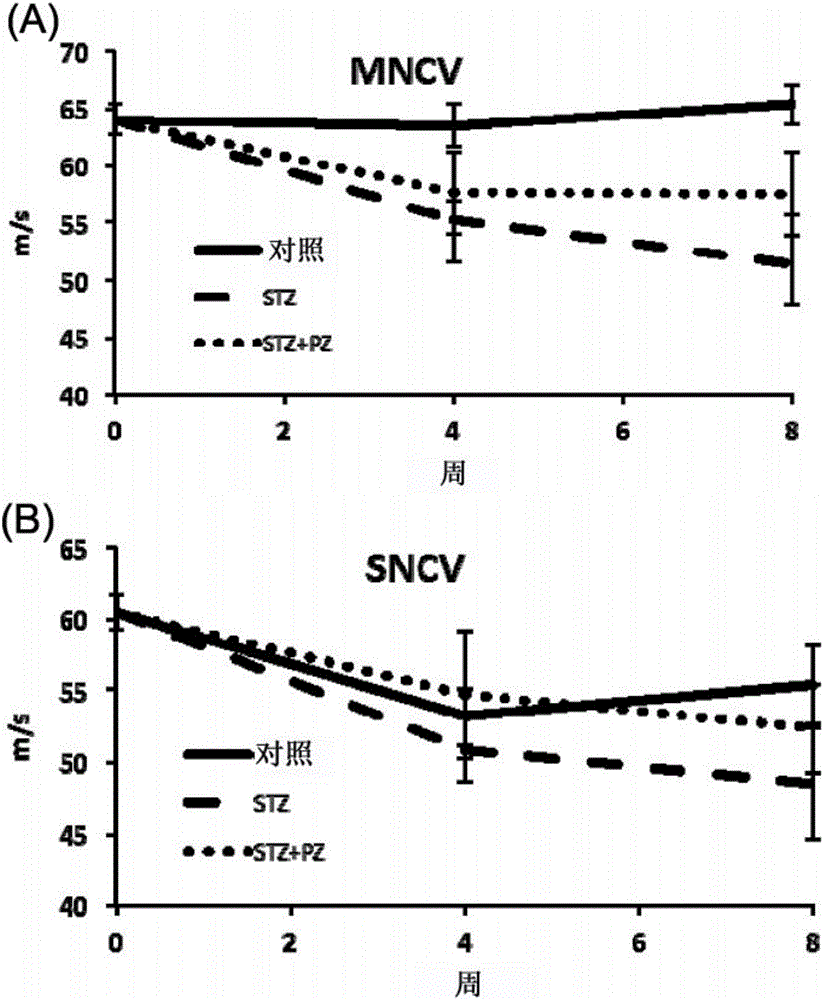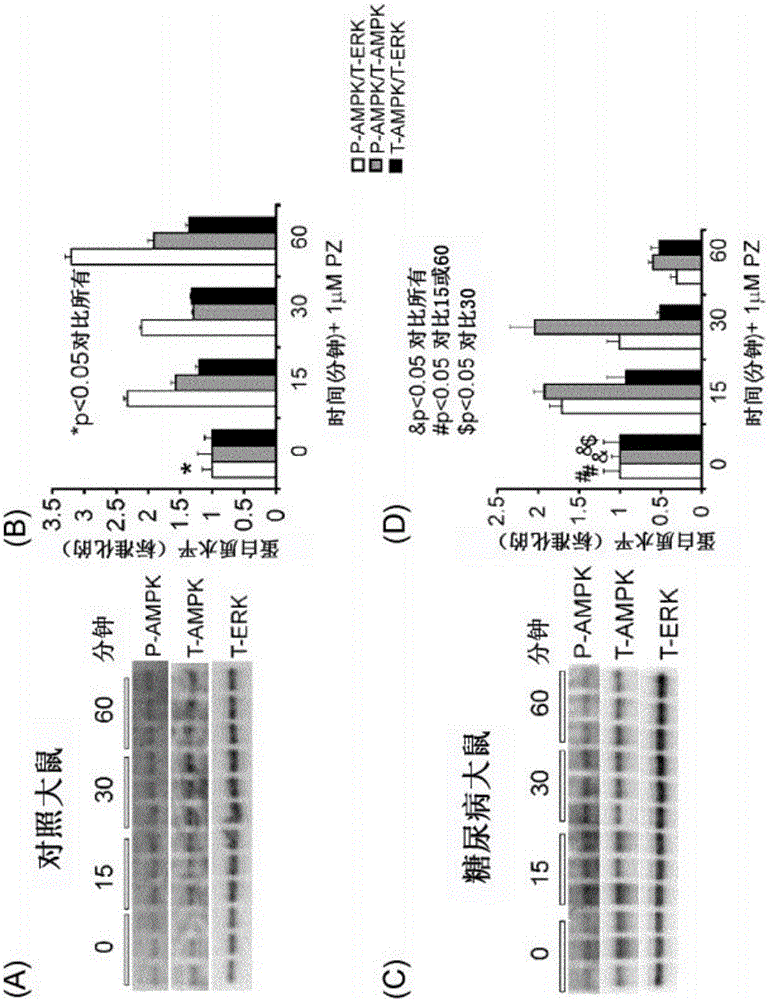Methods and compositions for treatment of peripheral neuropathies
A technology for peripheral neuropathy and composition, which can be used in nervous system diseases, drug combinations, active ingredients of heterocyclic compounds, etc., and can solve problems such as huge costs
- Summary
- Abstract
- Description
- Claims
- Application Information
AI Technical Summary
Problems solved by technology
Method used
Image
Examples
Embodiment 1
[0141] In previous work, we showed that pirenzepine prevents and reverses small fiber neuropathy in diabetes. We now demonstrate that pirenzepine is also able to prevent large fiber motor nerve conduction velocity (MNVC) slowing in streptozotocin-induced (STZ-induced) diabetic rats ( figure 2 (A)) and sensory nerve conduction velocity (SNCV) slowed ( figure 2 (B)). The STZ rat is a model of type 1 diabetes. According to the method taught by Calcutt et al. (2003, Therapeutic efficacy of sonic hedgehog protein in experimental diabetic neuropathy, J.Clin.Invest.111:507-514), rats were treated with 5 mg / kg (s.c.) pirenzepine for 8 weeks. Nerve conduction velocity was measured according to the method taught by Mizisin et al. (NCV). The data showed that diabetes induced a time-dependent slowing of large fiber motor and sensory NCV (both p<0.01 vs control at 8 weeks of diabetes) and that pirenzepine treatment attenuated these conditions (both p<0.05 vs vehicle treatment (veh...
Embodiment 2
[0143] Cultured adult sensory neuronal subpopulations of age-matched control rats or 3-5 month STZ-induced diabetic rats were treated with a 1.0 μM pirenzepine-HCl dose. The first subpopulation was treated immediately, while the second, third and fourth subpopulations of neurons from control rats and diabetic rats were treated with pirenzepine 15 min, 30 min and 60 min later, respectively deal with. Cell cultures were lysed and used to prepare Western blots, which were probed with antibodies against phosphorylated AMPK (P-AMPK), total AMPK (T-AMPK) and total ERK (T-ERK). image 3 (A) shows gels produced by cultures of age-matched control rats, while image 3 (C) shows gels produced by cultures of diabetic rats. data displayed in image 3 In (B) and 3(D), wherein the Y-axis represents the protein levels quantified by blots in (A) and (C) and normalized to the control, it is shown that pirenzepine significantly activates normal rats ( image 3 (B)) and type 1 diabetic rats (...
Embodiment 3
[0145] Adult sensory neuron cultures from STZ-induced diabetic rats were treated with 1.0 μM pirenzepine following the procedure taught by Roy Chowdhury et al. (2012), with two adenoviruses overexpressing dominant-negative mutants of AMPK, the AMPK subunit The 1 and 2 mutants, termed "AdDN1" and "AdDN2" (the adenovirus overexpressing dominant negative mutants were a gift from Dr. Jason Dyck of the University of Alberta) were transduced two days after treatment. Figure 4 (A) and 4(B) are GFP fluorescence micrographs of adult rat sensory neuron cultures transduced with a control adenoviral vector expressing only GFP, where Figure 4 (A) Not receiving pirenzepine treatment while Figure 4 (B) Received pirenzepine treatment. Figure 4 (C) and 4(D) are GFP fluorescence micrographs of adult rat sensory neurons transduced with "AdDN" dominant-negative AMPK mutant, where Figure 4 (C) Not receiving pirenzepine treatment while Figure 4 (D) Received pirenzepine treatment. Figure ...
PUM
 Login to View More
Login to View More Abstract
Description
Claims
Application Information
 Login to View More
Login to View More - R&D
- Intellectual Property
- Life Sciences
- Materials
- Tech Scout
- Unparalleled Data Quality
- Higher Quality Content
- 60% Fewer Hallucinations
Browse by: Latest US Patents, China's latest patents, Technical Efficacy Thesaurus, Application Domain, Technology Topic, Popular Technical Reports.
© 2025 PatSnap. All rights reserved.Legal|Privacy policy|Modern Slavery Act Transparency Statement|Sitemap|About US| Contact US: help@patsnap.com



